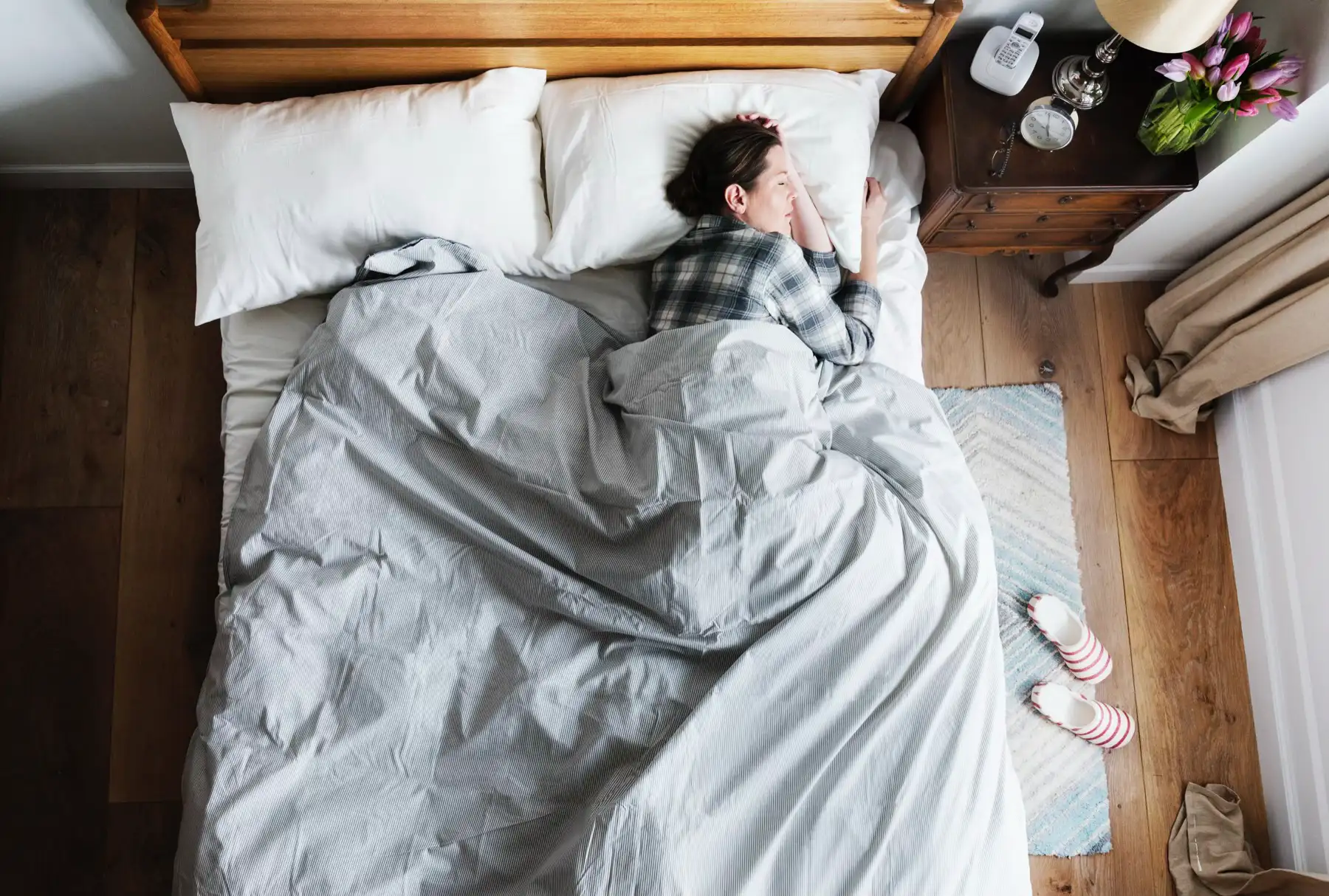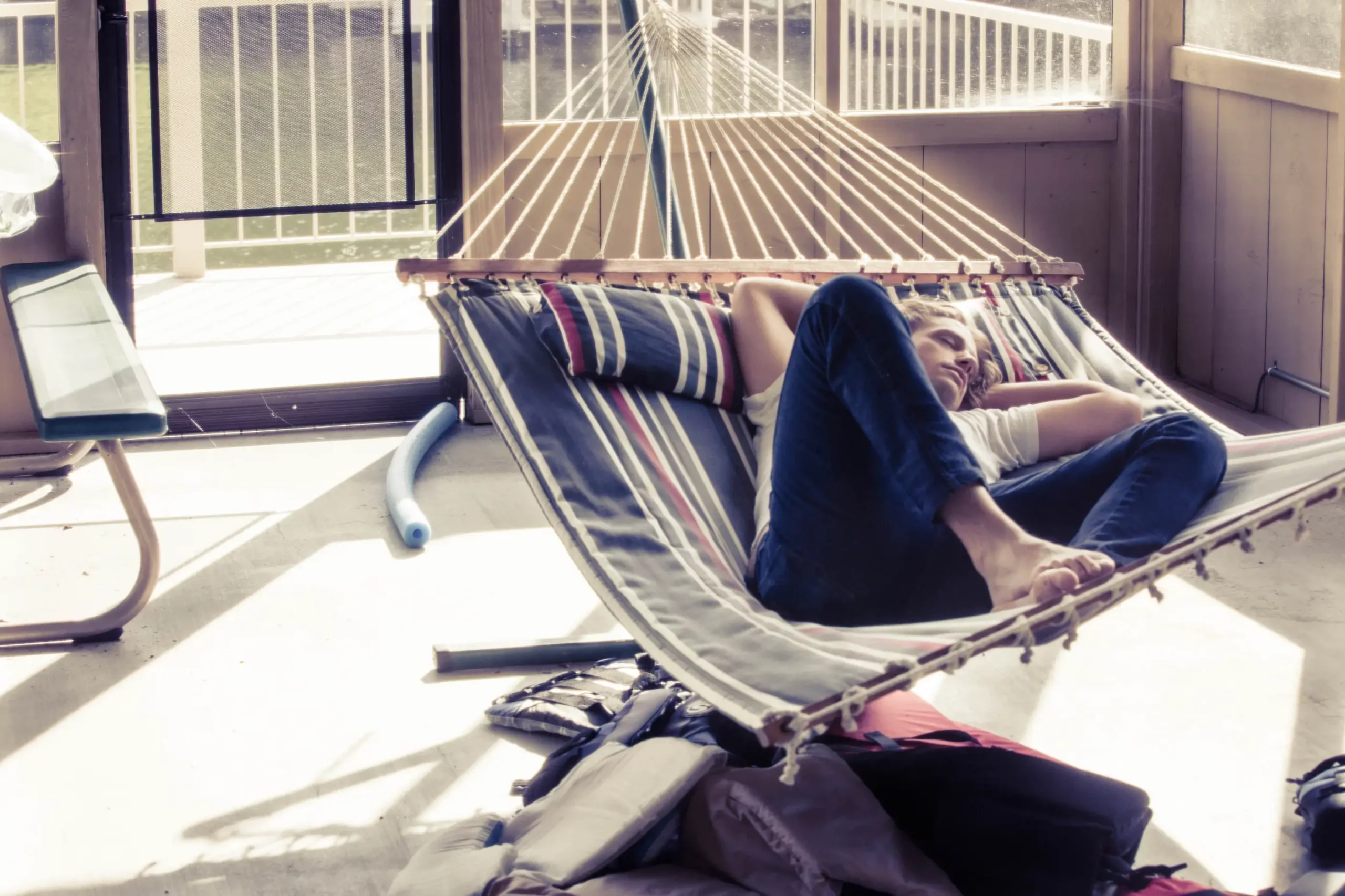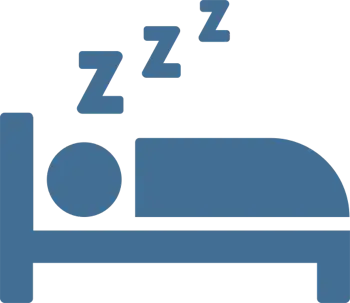No caffeine?! I know that may sound insane. But I am here to tell you it is possible. If you’re unable to get your body going, “can’t think straight” without your java, or wake up grumpy until that first cuppa joe or energy drink in the morning, it’s worth considering a change.
There is nothing “wrong” with having a cup of coffee or caffeinated tea in the morning. The ritual of grinding the beans, preparing my french press, and holding that aromatic cup of coffee in the morning makes me happy. It’s my time to relax, look at my calendar, check emails, check the news and prepare for my day. Sometimes I prefer a cup of matcha green tea and the ritual of whisking it with some oat milk and monk fruit sweetener.
The problem with caffeine is that it blocks the receptor site for adenosine, a neuromodulator in our body that causes sleepiness. Adenosine builds up during the day (called sleep pressure), so we can fall and stay asleep at night. When we consume caffeine, the adenosine is blocked and has no place to go. When the caffeine finally wears off, the adenosine build-up suddenly floods the receptors and causes us to crash, and makes us even more sleepy than before we had that caffeinated beverage. To wake from this somnolence, we consume more caffeine, perpetuating the cycle. Essentially, we need caffeine to help us recover from the effects of caffeine.
Go gradual
If you need to transition away from that coffee pot, try making it half-decaf and slowly transition. Or try matcha or green tea, which are naturally lower in caffeine and high in antioxidants. If you start your day with an energy drink and prefer that cold burst, try iced green tea with stevia or monk fruit. In other words, you don’t need to go cold turkey.
Don’t indulge after noon
Also it’s best to avoid caffeine in the afternoon. Most users don’t realize when we ingest caffeine at noon, a quarter of it is still circulating in our bloodstream at midnight. This lingering caffeine in our bodies adversely affects deep sleep. Even if that afternoon cup of coffee or tea doesn’t prevent us from falling asleep, it affects our sleep quality. With impaired sleep, we will feel fatigued the next day, and the cycle will continue.
Head for the sunlight
When you wake in the morning, open your curtains or blinds and allow your eyes to adjust to the daylight. Do this as soon as you roll out of bed, brush your teeth, or have breakfast. Hold off looking at your devices! Allowing morning light in will help with your body’s circadian rhythm, which not only improves alertness but also aids with a better night’s sleep. And if you head to work at dawn, remember to take some time to get sun on your face around noon or when you take your lunch break. Getting sun in for 10 to 15-minute intervals throughout the day supports your circadian rhythm and boosts your vitamin D levels. (see our posts on Sleep!)
Hydration!
You may have heard it before, but staying hydrated is another key to feeling refreshed. In an article about hydration benefits, the Harvard Medical Journal says, “Water is essential for carrying nutrients to your body’s cells and taking away waste products. Roughly 50% to 60% of your body weight is water, yet you constantly lose water through urine, sweat, and breathing. When you are low on fluids, your body may feel tired and weaker than usual. Consuming a sufficient amount of fluids in beverages and water-filled food (such as fruits, vegetables, and soup) will help replenish the water your body loses throughout the day and can help you maintain your energy.”
When clients struggle to adequately hydrate throughout their day and ask me for tips, I recommend they get a drinking vessel that holds 20 ounces or more. I like using a large, wide-mouth 32 ounce mason jar with a straw (there are special lids you can get for the jar that holds a straw, too. I have reusable straws in fun colors!). Whatever works for you, as long as it holds plenty of water.
When you wake up, go to the kitchen and fill your vessel with fresh water. Before doing anything else, stand or sit in your kitchen and drink it all. Don’t allow yourself to have coffee or tea or start your morning routine until you have finished it all. I like to put fresh lemon juice or apple cider vinegar in mine. It’s a wonderful way to begin your morning, knowing you got in that first round of water for the day!
If you work from home, fill it up again and stick your vessel in the fridge (or leave it out if you prefer room temperature) to drink before or after lunch. If you work in an office, get a water bottle that holds 20 ounces or more, and aim to drink it by the time you finish work. You can add an herbal tea bag if that helps. I sometimes enjoy a mint or hibiscus tea bag with a couple of drops of monk fruit or stevia. And of course, lots of fresh vegetables and fruits throughout your day will provide water and loads of nutrients (see our posts on Nutrition).
Rest
Just like eating when you are hungry, it is important to rest when sleepy. Our early ancestors naturally took naps in the afternoon. And in the regions around the globe with the highest number of healthy centenarians, naps and siesta is part of the culture.
When you start to fade in the afternoon, it means you need rest. If you work in an office, try closing the door or find a quiet spot to recline and rest for 15-20 minutes. You don’t need to fall asleep. Just giving your body and mind a break can refresh you for the rest of your day. If you are able to nap, aim for earlier in the afternoon, before 3 PM, so it doesn’t disrupt nighttime sleep.
Activity
Another pick-me-up is a quick physical activity like a brisk walk, a few jumping jacks, or dance moves. It will get your heart rate up and your blood pumping. Many of us fall into the all-or-nothing trap. If we don’t commit to an hour at the gym, then we don’t exercise. What is actually most important is fitting in just a few minutes, several times throughout our day. Getting up and moving gives us that needed energy (see our posts on Activity and Exercise!).
Breathe
I learned ayurvedic breathing techniques from a doctor I worked with a few years ago: alternate nostril breathing and breath of fire. She led us through these helpful exercises when we’d sit at the huddle table after lunch, and everyone felt sluggish. They may seem strange to us, but these practices have been used in some South Asian cultures for centuries. Here are a couple of short videos:
If you don’t have privacy and prefer not to bring attention to yourself, you can sit quietly, close your mouth and inhale through your nose to a mental count of four. Hold your breath for a count of seven. Exhale through your mouth, making a whoosh sound for a count of eight. This is called the 4-7-8 breath. Repeat the process three more times for a total of four breath cycles. This breathing technique is known for improving mood and reducing stress, which both can affect energy.
Here is a short video of this technique with Dr. Andrew Weil:




